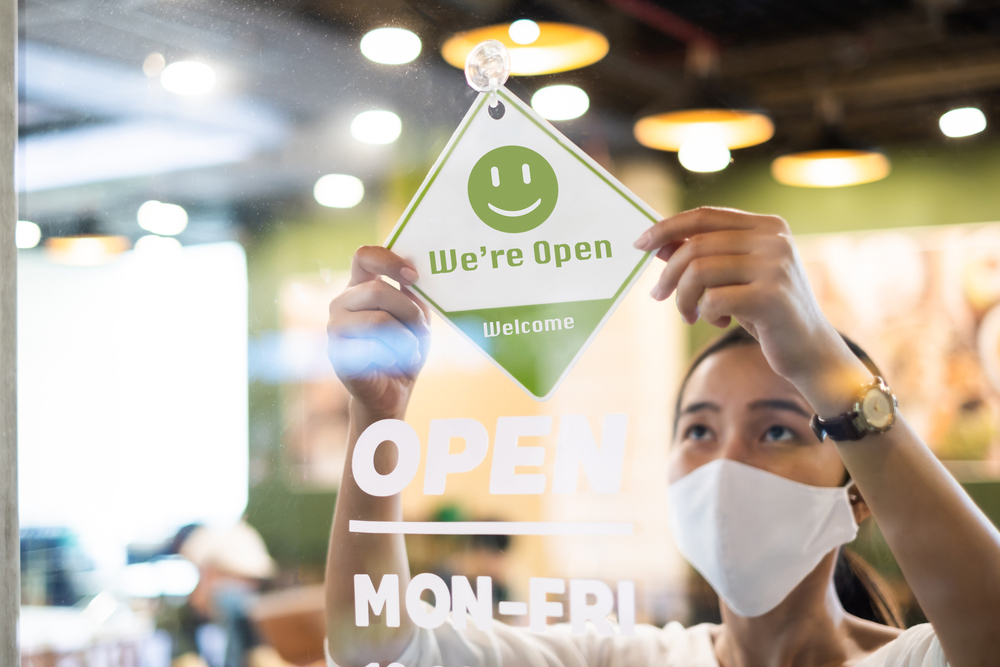“Unprecedented” will probably go down as one of this year’s most frequently uttered words. It does truly reflect the profound significance of our current situation.

Because the result of the pandemic upon our business culture is indeed unprecedented, we need to find ways of addressing the health and safety of our workplaces and then determining best practices for managing, and potentially reinventing, our businesses.
Be Aware of State and Federal Laws
If you have been closed and are preparing to reopen, or if you have been conducting business on a limited basis and plan to bring back most of your staff in the coming weeks and months, be aware that you must still comply with nondiscrimination laws, including Title VII, applicable state laws, and the Americans with Disabilities Act (ADA).
Employers are often “well meaning” in their efforts to protect their employees. Good intentions, however, do not bode well as defenses in discrimination cases. For example, deciding against returning workers who have disabilities out of concern (or fear) that they are more likely to contract the disease is discriminatory.
It is up to the employee, and his or her physician, to assert an inability to return to the workplace because of a protected Families First Coronavirus Response Act (FFCRA) reason. Distribute your FFCRA forms to your employees; once they are completed and returned, you MUST retain those forms for 4 years.
A review of the forms and the reasons set forth must be assessed in an objective and professional manner. Confidentiality must be protected, and the review should be done by one or two key people with a need to know.
Understand the Accommodation Process
An employer’s obligation to reasonably accommodate a qualified individual with a disability remains a business obligation, as well. As in pre-pandemic times, if an employee sets forth a proposed accommodation that is not viable for your business and would cause a hardship, the Equal Employment Opportunity Commission (EEOC) requires that you engage in a positive dialogue to determine if another reasonable accommodation would enable the employee to perform the essential functions of his or her job.
That said, remember that all employee medical information is strictly confidential, as laid out in the Health Insurance Portability and Accountability Act (HIPAA). If you’re a self-insured employer, federal law mandates appointing a privacy officer who maintains this personal data and lets employees know about their rights to privacy.
Such information includes Family and Medical Leave Act (FMLA) physician certifications or doctors’ notes possibly required if an employee takes a leave of absence due to illness, as well as any records that demonstrate a need for accommodation under the ADA. Of course, as with all good Human Resources practices, document, document, document!
Be Objective When Conducting Layoffs or Furloughs
If your business can no longer support the staff you had on board last year, address your cutbacks carefully. Create a spreadsheet with an objective analysis as to your business needs and the positions/roles in the company that support your requirements.
Once you determine the necessary grouping of positions, you may need to then further reduce the number of workers holding these positions within certain categories. Use relevant and impartial factors, such as documented performance reviews, with the goal of retaining the best-qualified people for the remaining jobs.
Keep an eye out for unintended discriminatory results. While you may use factors that you believe to be nondiscriminatory in nature, the actions you take could result in unexpected discriminatory impact, so you may wish to enlist professional assistance for these decisions.
Don’t Forget About Social Distancing
Adherence to Centers for Disease Control and Prevention (CDC) guidelines and protection of your valued Human Resources are necessary. Deep cleaning/professional sanitization is crucial. Apart from the obvious importance, it sends a clear message to your employees and your customers/clients/patients about your commitment to health and safety. You should continue to have professional cleaning done as often as practical.
Your workplace is ready, but what about the practical nature of bringing in your people? Physical distancing is key. For now, gone are the days of getting the team together in the conference room. Use of such a room might be limited to two colleagues on opposite sides of a long table. Meal areas must become more utilitarian.
Consider eliminating any storage of food in the refrigerator. If you allow use of a microwave, limit food heating to one employee at a time. Consider hanging an “in use” sign on the lunchroom door so other employees don’t enter the space while one is heating his or her meal. To avoid storage and preparation of food, one option would be to have employees bring their food in insulated bags or coolers that remain by their workstations, lockers, or desks.
Physical distancing while working will depend upon your site. In a large production area, a skeleton crew of 6 people instead of 12 might allow for sufficient space. Many retail stores and offices are using blue painter’s tape or decals to section off areas that are in excess of 6 feet and keep people, literally, behind the blue line.
Consider contacting a business design consultant and/or architect to see if your normal office cubicles can be renovated to allow for more privacy and/or additional space. Alternating and staggering work times and teams is an important consideration to assist with the issue of distancing and avoiding congested areas.
Update and Distribute Handbook Policies
Make sure that, when you distribute policies and protocols regarding hygiene practices, such policies are signed by your employees. These policies should include, but not be limited to, frequent hand-washing, how to address sneezing or coughing, and employee obligations to regularly clean work surfaces and common areas.
Consider having your employees watch one of the numerous videos available online regarding the proper way to wash one’s hands and the appropriate way to sneeze or cough into one’s elbow.
In addition to acknowledging and signing the hygiene policies, should you choose to monitor employee temperatures (upon their arrival to work daily) with a noncontact thermometer, employees should sign a memo in advance acknowledging and permitting that practice.
Employers should appoint a safety or wellness coordinator to handle this function. That coordinator must keep temperature records confidential, and, as with all medical information in the workplace, they should be kept separately from employees’ regular personnel file. The EEOC does not object to the practice of temperature monitoring.
Keeping Workers Safe and Healthy Isn’t New
Keep in mind that it is your obligation as an employer to provide a healthy and safe workplace. This is not a new concept. Indeed, the Occupational Safety and Health Administration (OSHA) was created in 1970. And employees can file OSHA complaints if your business does not meet all applicable standards and use diligent measures to adhere to CDC guidelines. But more importantly, taking the proper precautions is the right thing to do.

Helene Horn Figman is an employment law specialist and attorney of the Law Offices of Helene Horn Figman, P.C., with a focus on workplace education and training. She can be reached at hfigman@figmanlaw.com.
